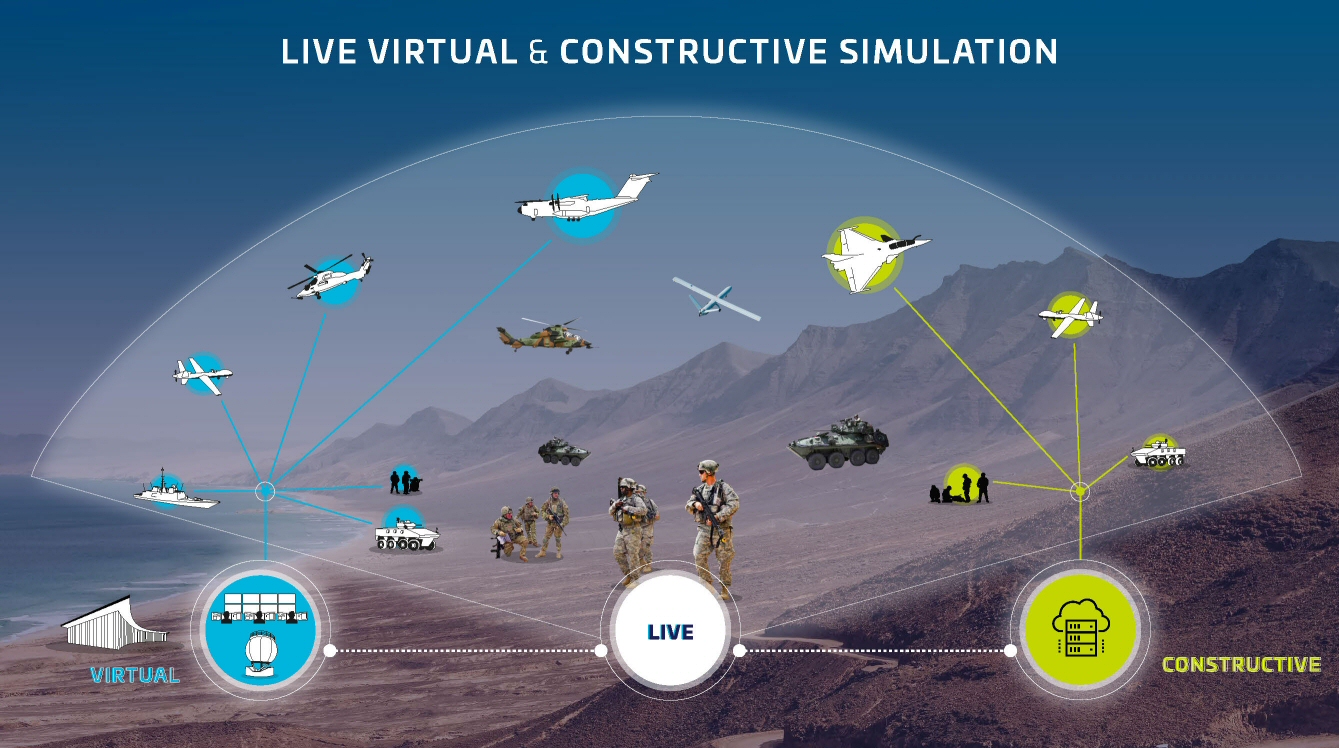LVC: resource-efficient solution for high-intensity combat training
The spectre of high-intensity combat creates new challenges – and new requirements – for the armed forces. To help them prepare for possible future engagements, Thales now offers a solution that combines Live, Virtual and Constructive (LVC) modes to provide the most effective training possible at optimum cost.
Adapting to new military requirements
With the increasing number of military operations and the resurgence of high-intensity combat, force preparation is no longer an option but an absolute necessity. High-performance equipment and systems are clearly vital, but soldiers, pilots and operators also need to be trained to use them so they are ready to deploy at short notice or extend their missions if the need arises . In the age of collaborative combat, mission success will hinge on real-time coordination of infantry units with artillery, reconnaissance, space-based assets, drones and close air support.
Despite budget constraints and the limited number of actual combat systems available for training purposes, the armed forces need to address multiple operational priorities, while meeting the challenge of planning their training programmes and reducing their impact on the environment.
Thales's LVC solution
Building on its innovative technologies and expertise in synthetic environments, Thales is opening a new chapter in mission preparedness with a solution that combines Live, Virtual and Constructive (LVC) training modes.
- Live training involves actual operators using actual systems (with simulated firing) so that an infantry unit, for example, can rehearse an operational engagement on the ground before carrying out a real mission.
- Virtual training involves using simulators operated by actual personnel – with two pilots training on separate flight simulators, for example, or members of a tank squadron training on simulators incorporating actual equipment to rehearse coordinated manoeuvres in the same tactical environment.
- The Constructive component of Thales's hybrid solution relies on Computer Generated Forces – an automatically generated environment with simulated assets – to add value to virtual training by incorporating additional friendly or hostile forces programmed to act intelligently as an operational scenario unfolds.
With this solution, instructors can create scenarios in which all the virtual players can "see" the actual players, and vice versa.
This new approach to collaborative, combined-arms training draws on all three modes to provide a single solution for high-level training of multiple players, with thousands of entities involved, tying up fewer resources and less actual equipment and significantly reducing the cost and environmental impact of training operations.
Combined-arms training scenarios
• Urban combat training on the ground, together with close air support pilots and UAV operators
For the most realistic and effective training, a battlegroup deploys a squadron equipped with the CERBERE live simulation solution on an urban combat manoeuvre (live). Another squadron on simulators in a training centre operates in the same environment as the squadron on the ground (virtual). For added realism, a battlegroup deployed around the base is simulated by the Soult simulator (constructive).
• Helicopter pilot training
Helicopter pilots training on actual systems (live) receive information and intelligence from simulated drones operated from ground stations (virtual), and carry out a complex tactical manoeuvre together. Computer-generated forces are added to the scenario to create conditions close to those encountered in high-intensity combat in the air, on land and at sea (constructive).
Incremental upgrade of existing training capabilities
Thales can upgrade existing simulation-based training capabilities, such as live simulation, with simulations from the two other modes (virtual and constructive) to provide more effective training with fewer resources, lower costs and a smaller carbon footprint. Thales's modular approach expands the scope of training to go beyond tactical training and include the combined-arms and joint forces dimensions needed to achieve operational readiness.



